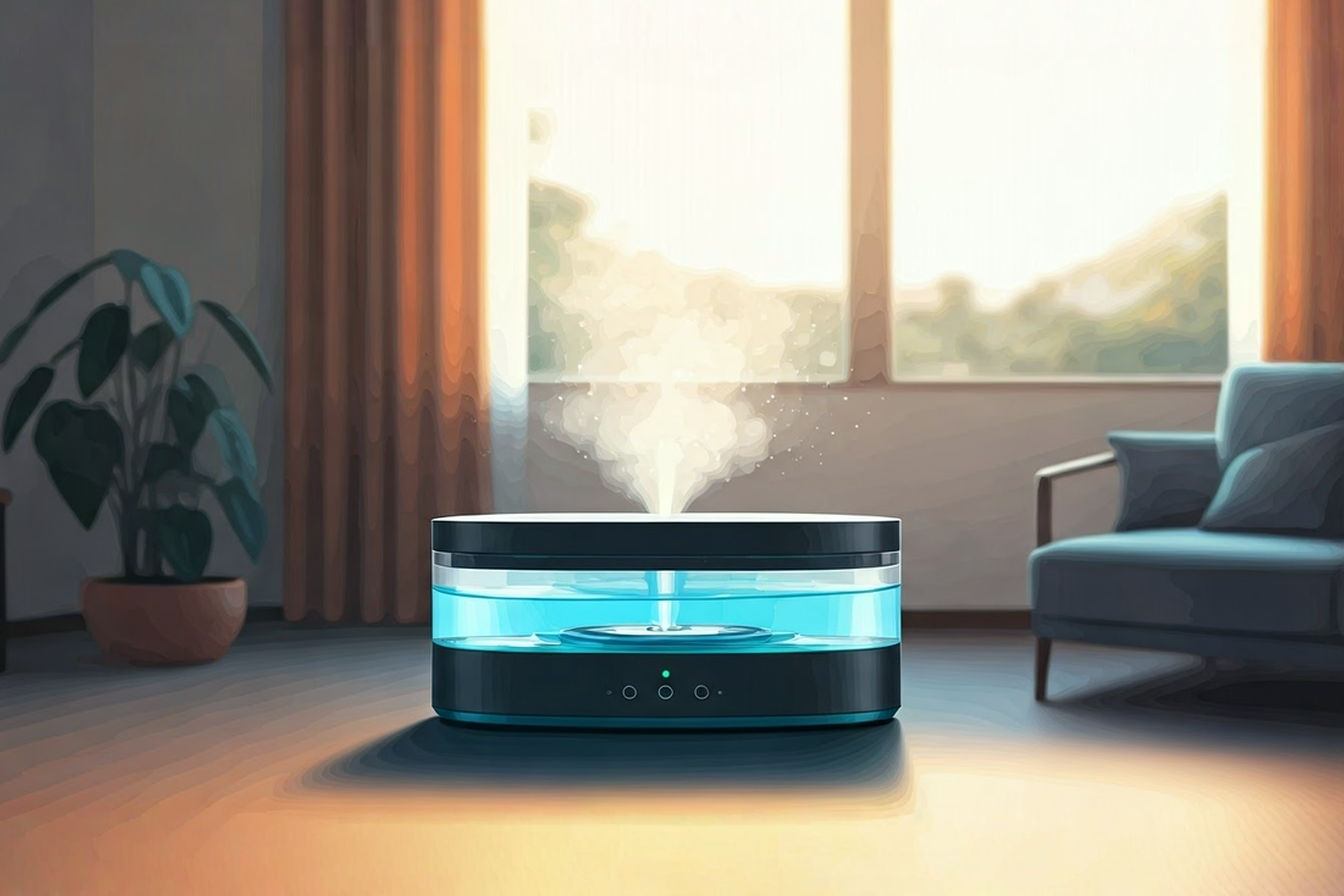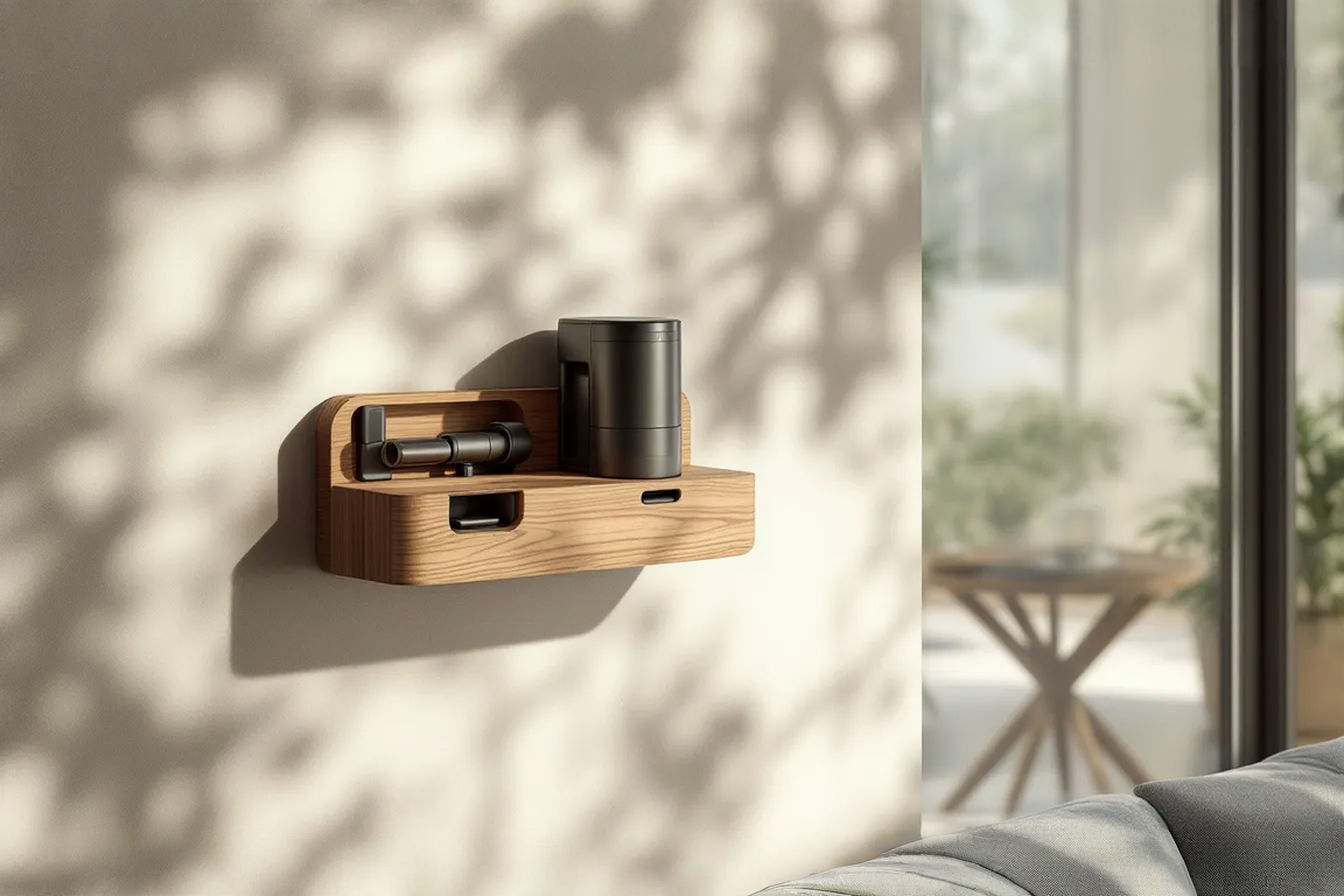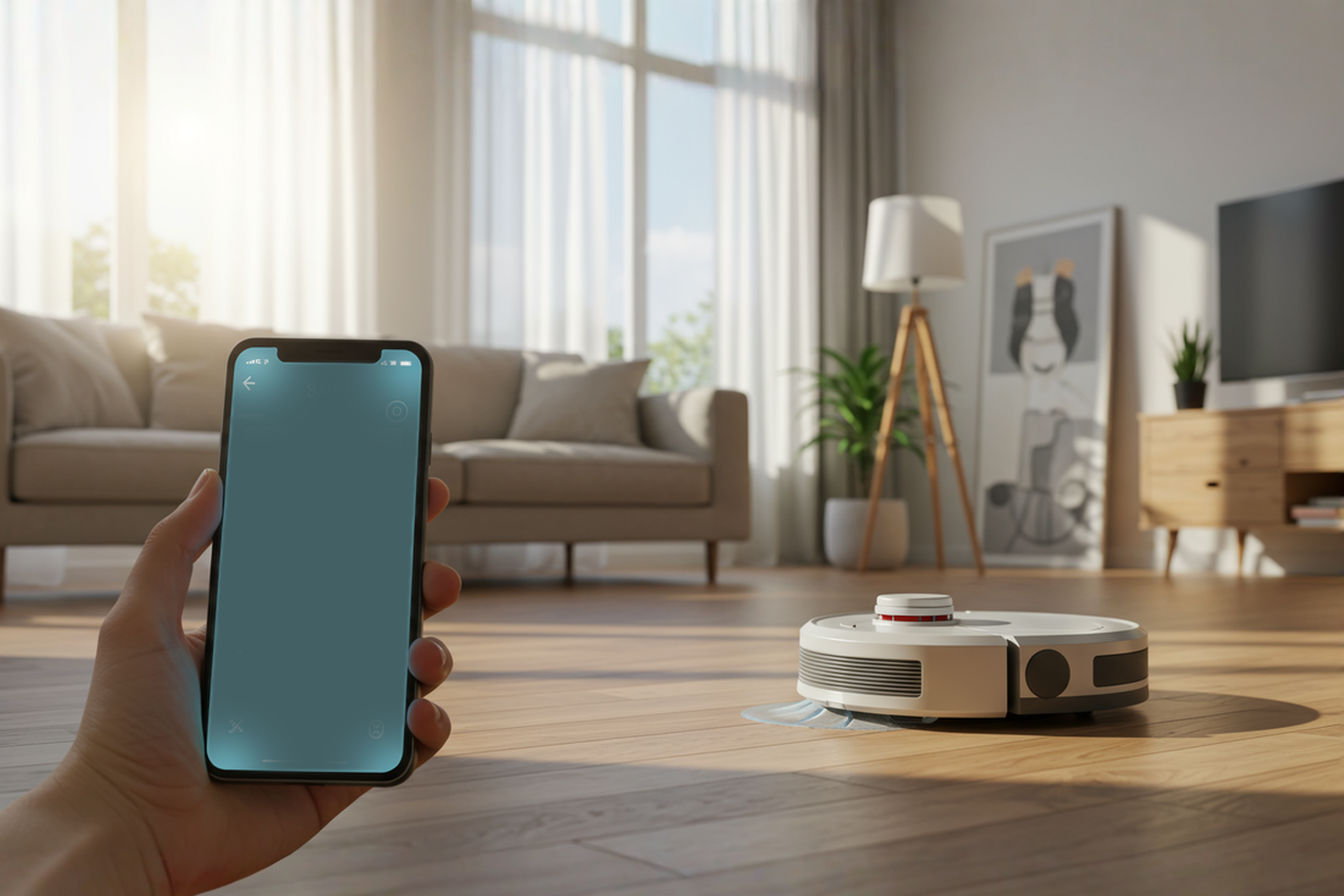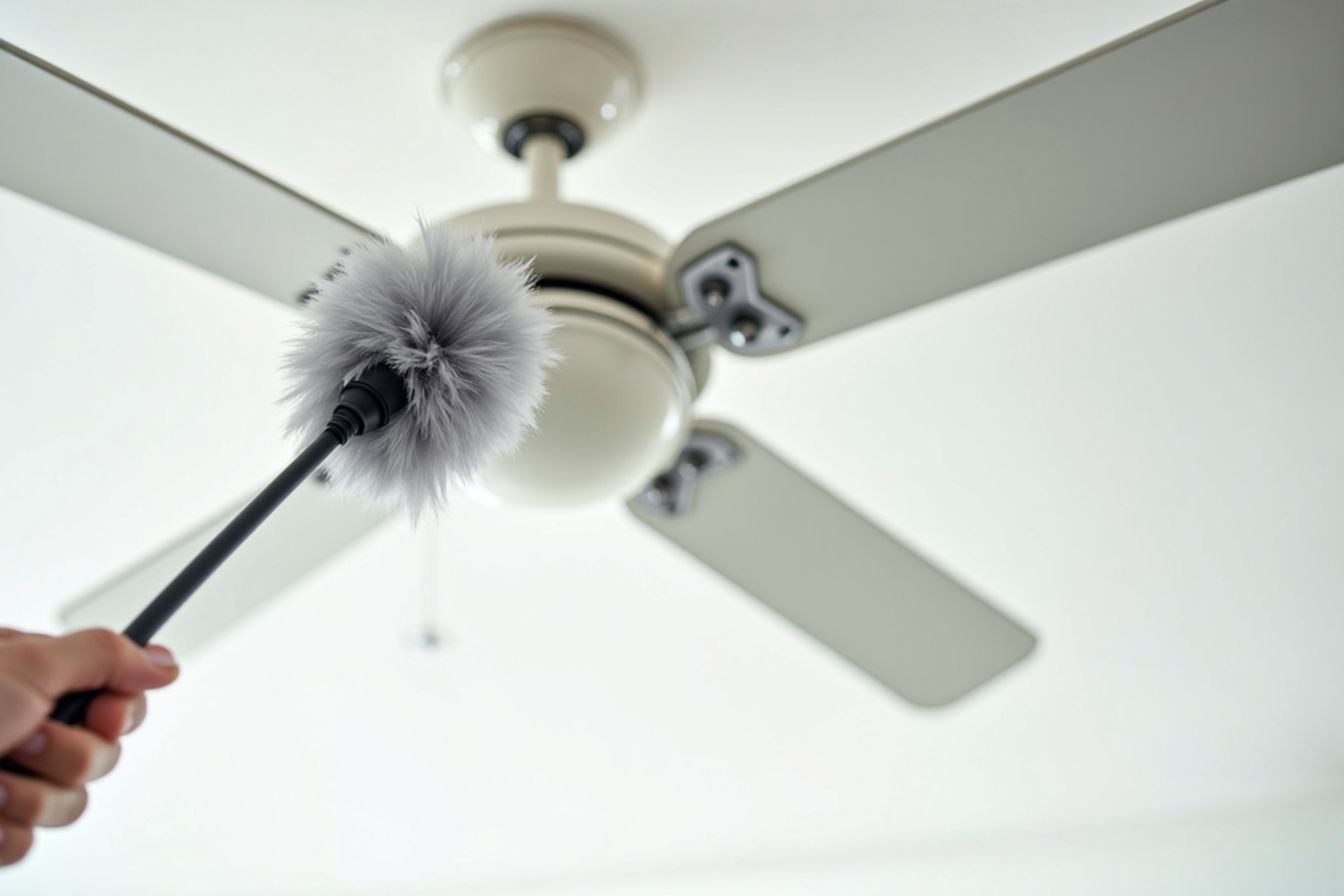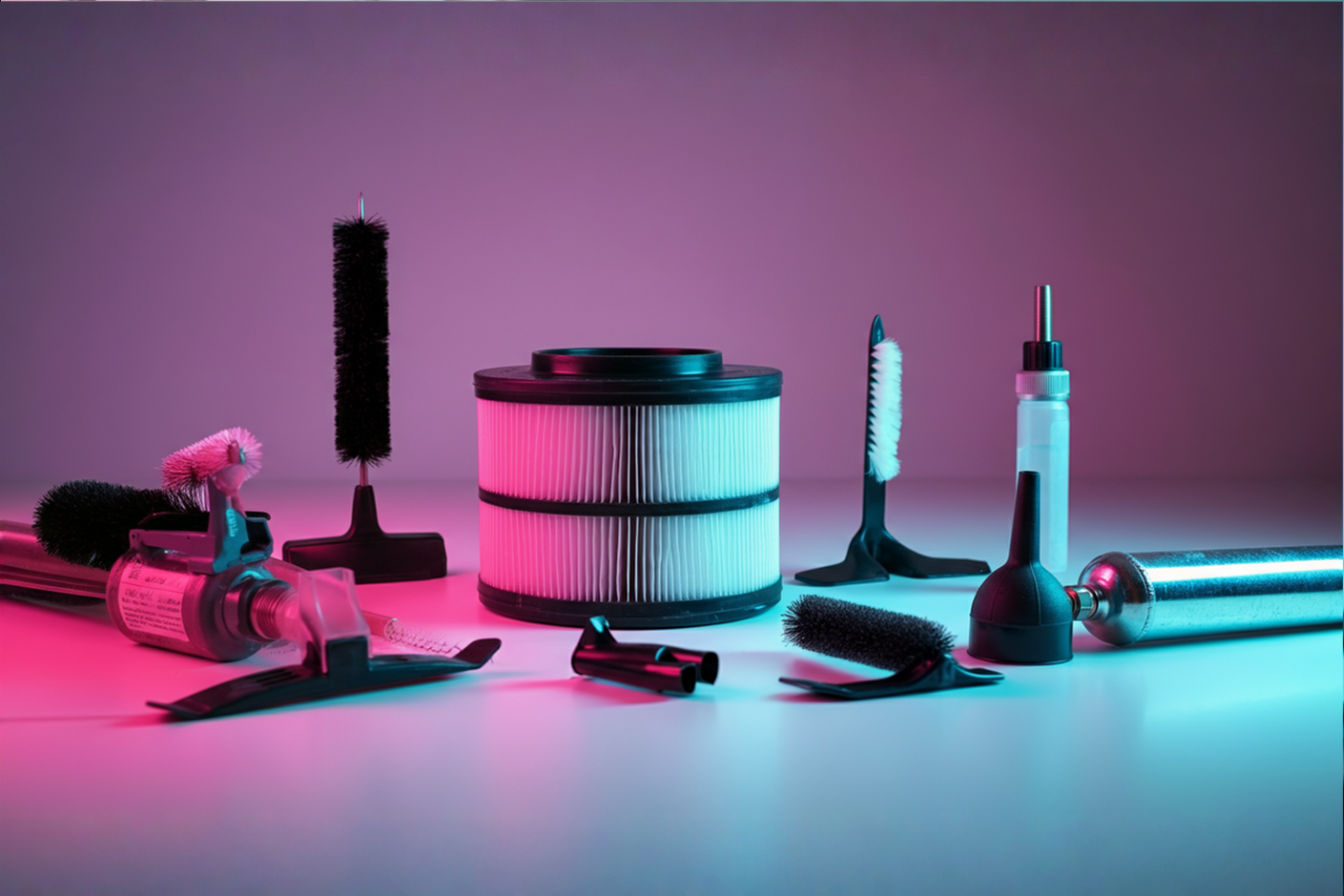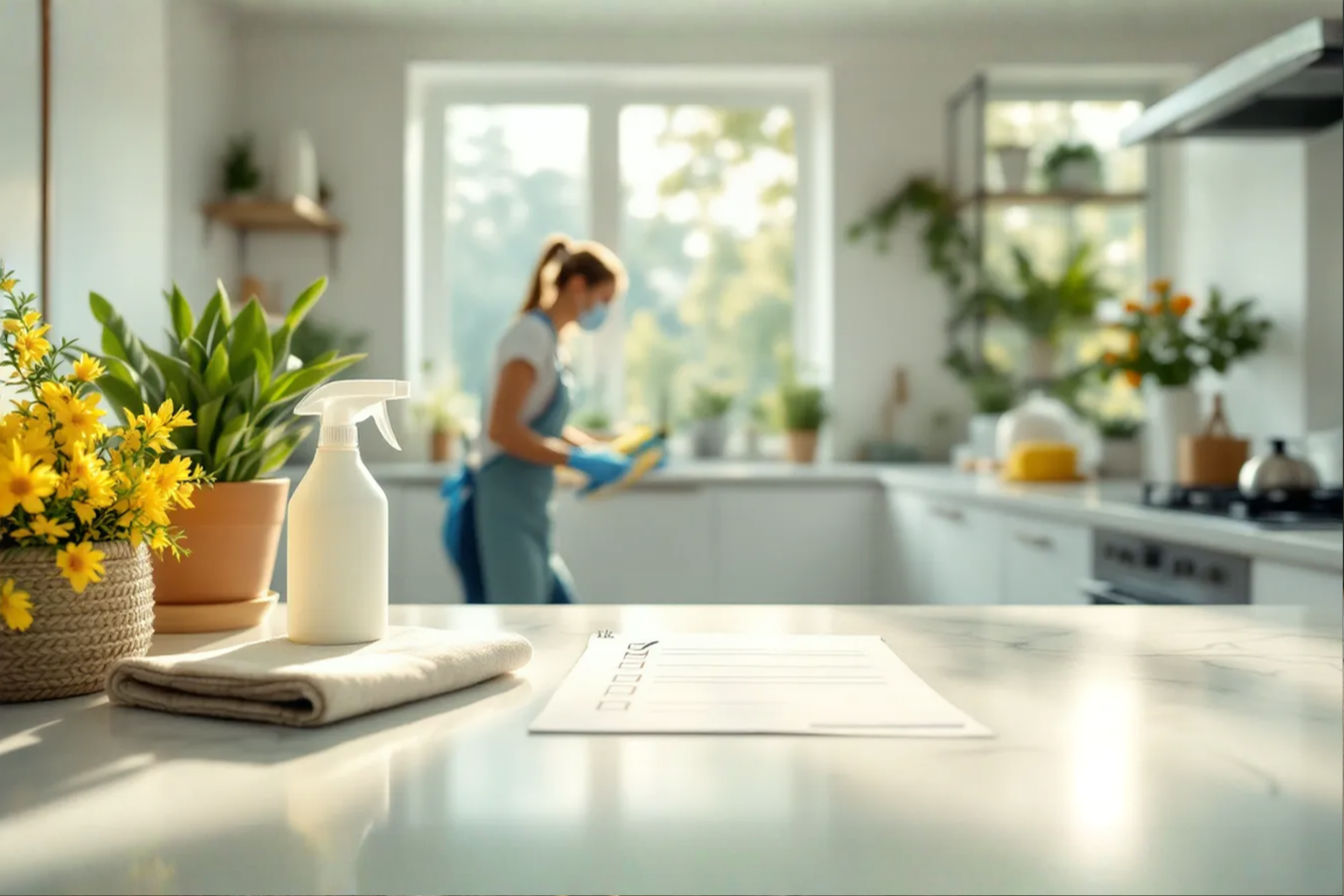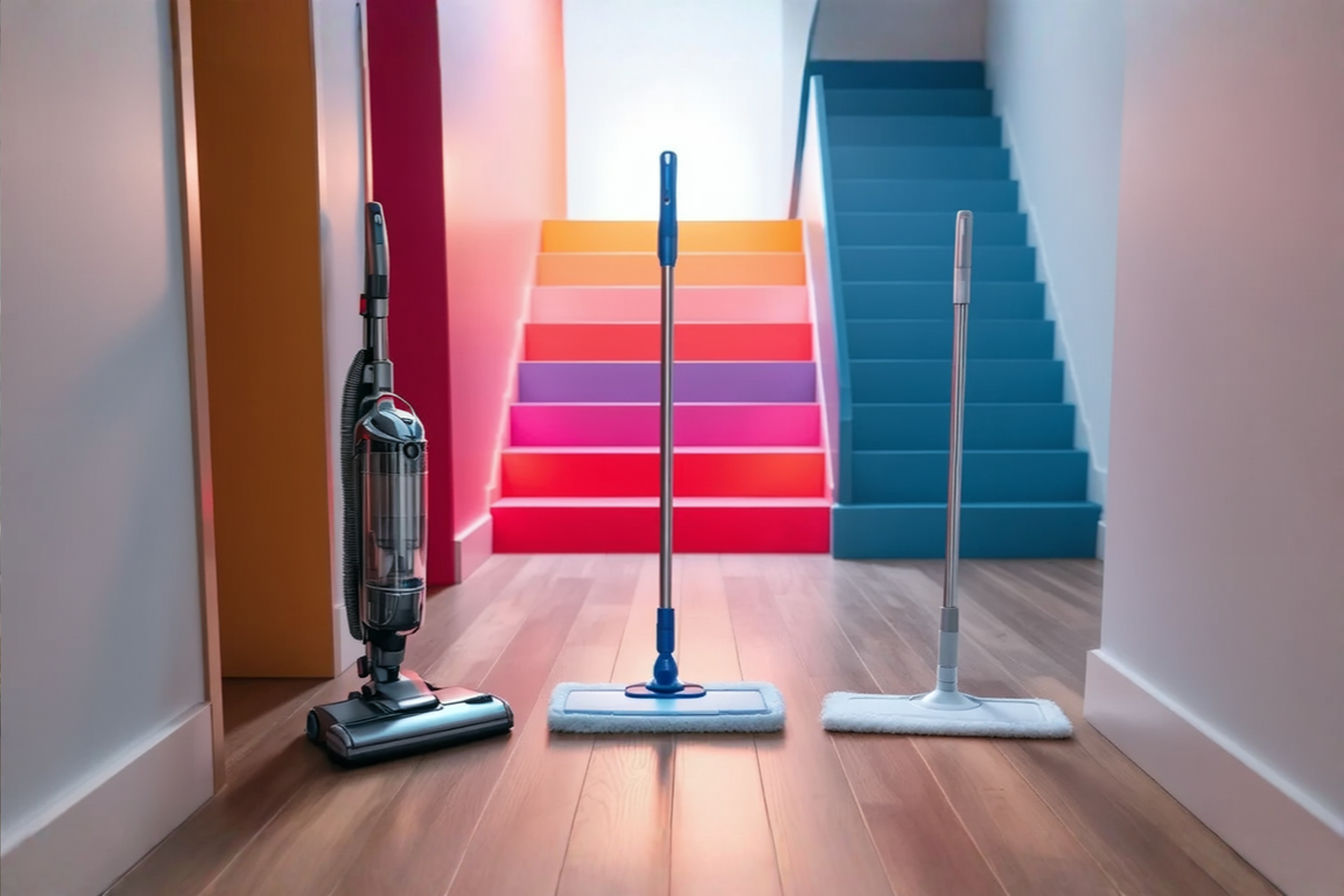Air Washing Systems: Advanced Technologies Beyond Traditional Air Purifiers
Air washing systems represent a revolutionary approach to indoor air quality, offering simultaneous purification and humidification that traditional air purifiers simply cannot match.
This post may contain affiliate links. If you make a purchase through these links, we may earn a commission at no additional cost to you.
In the quest for cleaner indoor air, technology continues to evolve beyond conventional filtration methods. Air washing systems represent one of the most significant advancements in this field, offering a sophisticated approach to air purification that addresses multiple air quality concerns simultaneously. These innovative devices combine water-based filtration with other purification technologies to create comprehensive air treatment solutions that go well beyond what traditional air purifiers can achieve.
Understanding Air Washing Technology
Air washing systems operate on a fundamentally different principle than standard air purifiers. The core technology revolves around the use of water as the primary filtration medium, rather than relying solely on physical barriers like HEPA filters or activated carbon. This water-centric approach enables these systems to capture pollutants through a process similar to how nature cleans the air during rainfall.
The basic mechanism involves drawing air through a water chamber or moistened elements. As air passes through or over the water surface, particulates and water-soluble contaminants are trapped and removed from circulation. This process combines several physical principles including impaction, where particles collide with water molecules and become captured; absorption, where water-soluble gases dissolve into the liquid; and humidification, which adds moisture to the air as a beneficial side effect.
The key components of a typical air washing system include:
- An intake fan that draws room air into the unit
- A water reservoir or basin that holds the purification medium
- Specialized discs, drums, or evaporative elements that maximize air-water contact
- Additional filtration technologies (in many models)
- A motor system that rotates the washing elements
- Controls for adjusting humidity output and operation settings
Modern air washers have evolved significantly from early models. Contemporary systems incorporate advanced features such as ultraviolet light sterilization, ionic purification technologies, and sophisticated sensors that monitor both air quality and system performance. This evolution has transformed air washers from simple humidifiers with some filtration capability to comprehensive air treatment centers.
How Air Washing Systems Differ From Traditional Purifiers
Traditional air purifiers typically rely on a series of physical filters to trap contaminants. Most conventional systems use some combination of pre-filters for larger particles, HEPA filters for microscopic particulates, and activated carbon for odors and gases. While effective for their intended purposes, these systems face inherent limitations in what they can remove and how they affect overall air quality.
Air washing technology presents a distinctly different approach. The water-based filtration method offers several advantages that mechanical filtration cannot match. When air passes through water, it undergoes a more thorough cleaning process that addresses a wider range of contaminants. Water naturally captures water-soluble gases, many VOCs, and particulate matter in one process, while simultaneously adding beneficial humidity to the air.
The efficiency comparison between these technologies reveals important differences. While HEPA filters excel at capturing particles down to 0.3 microns with up to 99.97% efficiency, they do nothing for room humidity and require regular replacement. Air washers may not match this specific particle capture rate but compensate with superior performance in other areas including:
- Capturing larger particles with nearly 100% efficiency
- Removing water-soluble gases that bypass traditional filters
- Maintaining optimal humidity levels automatically
- Requiring less frequent filter replacement
- Operating more quietly due to fewer air resistance points
- Reducing static electricity through natural humidification
These systems complement each other in many ways, which explains why some advanced air treatment solutions incorporate both technologies for comprehensive coverage of all indoor air quality concerns.
Types of Air Washing Systems
The air washing market encompasses several distinct technologies, each with unique approaches to water-based air purification:
Hydrotronic air purifiers represent the most sophisticated category, employing a combination of water-based filtration with electronic enhancement. These systems often incorporate electrostatic precipitation principles where particles receive an electrical charge before entering the water chamber, significantly increasing capture efficiency for even microscopic contaminants. The water itself may be ionized or treated to enhance its purification capabilities.
Evaporative air washers focus on the natural evaporation process to both clean and humidify air. These systems typically use rotating discs partially submerged in water. As the discs turn, they collect water and expose a large moistened surface area to passing air. Contaminants adhere to the wet surfaces while moisture evaporates into the airstream. This technology excels in drier climates where added humidity provides significant comfort benefits.
Combination systems integrate multiple technologies for enhanced performance. A common configuration pairs water-based filtration with UV sterilization to address biological contaminants. The water traps microorganisms, while UV light inactivates them, preventing reproduction and reducing bioaerosol concerns. Other combinations might include preliminary HEPA filtration followed by air washing for comprehensive coverage.
Advanced models now incorporate smart technology integration, allowing users to monitor and control air quality parameters through smartphone applications. These systems can automatically adjust operation based on real-time air quality readings, humidity levels, and even weather forecast data. Some premium units connect to home automation systems, operating in concert with HVAC equipment for optimized whole-house air management.
Pollutant Removal Capabilities
The effectiveness of air washing systems varies by pollutant type, with impressive capabilities across several categories of indoor air contaminants.
For particulate matter, including both PM2.5 and PM10, air washers demonstrate significant capture rates. The water medium efficiently traps larger particles through impaction and interception mechanisms. When particles collide with water molecules or the moistened surfaces within the system, they become entrapped and are effectively removed from circulation. Fine particles, especially those that are hydrophilic (water-attracting), show particularly high removal rates in properly designed air washing systems.
Biological contaminants represent an area where air washers excel. Bacteria, viruses, and mold spores that pass through the water medium face a hostile environment. Many microorganisms become trapped in the water, preventing their circulation. Advanced air washing systems that incorporate UV sterilization technology provide an additional layer of protection, actively neutralizing pathogens captured in the water reservoir. This combination proves particularly effective against common bioaerosols that contribute to respiratory issues.
Volatile organic compounds (VOCs) present a more complex challenge for any air purification system. Air washers show varying effectiveness depending on the specific compound’s water solubility. Water-soluble VOCs like formaldehyde show moderately good removal rates in air washing systems. However, non-polar VOCs with low water solubility may pass through with minimal reduction. This explains why many premium air washing systems incorporate additional activated carbon filters to address these specific chemical concerns.
Allergens and irritants including pollen, pet dander, and dust mite particles are effectively captured by the water medium in air washers. The water’s adhesive properties prevent these particles from becoming airborne again once captured, an advantage over some traditional filters that may release particles during power-off periods. For allergy sufferers, this continuous capture mechanism provides significant relief, especially when combined with the humidity control that helps suppress dust circulation.
Despite their impressive capabilities, air washing technology does have certain limitations. The efficiency varies with atmospheric conditions, particularly humidity levels. These systems generally perform better in moderate to low humidity environments where the water-air exchange occurs more efficiently. Additionally, very fine ultrafine particles (below 0.1 microns) may show lower capture rates compared to specialized HEPA systems designed specifically for such minute particulates.
Benefits of Air Washing Systems
The multifunctional nature of air washing technology creates several unique advantages that distinguish these systems from conventional air purifiers.
Simultaneous humidification and purification represents perhaps the most significant benefit. Unlike traditional purifiers that focus solely on contaminant removal, air washers maintain optimal humidity levels while cleaning the air. This dual functionality addresses the common problem of overly dry indoor environments, especially during winter months or in arid climates. Proper humidity levels between 40-60% help prevent dry skin, irritated respiratory passages, and even reduce the survival rate of certain airborne viruses.
Natural humidification occurs without the common “white dust” problem associated with ultrasonic humidifiers. The water in air washing systems effectively traps minerals rather than dispersing them into the air. This results in cleaner humidification that doesn’t leave residue on furniture or create respiratory irritation from aerosolized minerals. The evaporative approach also provides self-regulating humidity that rarely oversaturates the air, preventing the condensation problems that can occur with other humidifier types.
Odor elimination capabilities surpass many traditional systems, particularly for water-soluble odors. Cooking smells, tobacco residue, and various household odors that dissolve readily in water are effectively removed from circulation. The continuous washing process prevents odor buildup and provides a fresher environment without relying on masking fragrances. Some advanced models incorporate additional technologies specifically targeting non-water-soluble odors for comprehensive odor management.
Energy consumption tends to be lower in air washing systems compared to traditional purifiers with multiple filtration stages. The reduced air resistance through water versus dense filter media means fans require less power to maintain equivalent airflow. Additionally, the multifunctional nature eliminates the need for separate humidifier operation, further conserving energy. Many models feature efficiency modes that adjust performance based on current air quality conditions, optimizing power usage while maintaining effective air treatment.
Quieter operation characterizes most air washing systems, primarily due to their simplified airflow path. With fewer restrictive filter layers creating turbulence and back pressure, these systems can move air more smoothly with less noise generation. This makes them particularly suitable for bedrooms, offices, and other noise-sensitive environments where the constant drone of traditional purifier motors might prove disruptive.
Applications and Use Cases
The versatility of air washing technology makes these systems suitable for diverse environments, each benefiting from different aspects of their multifunctional capabilities.
In residential settings, air washers address multiple household concerns simultaneously. Families with allergy sufferers appreciate the continuous allergen removal combined with humidity control that helps suppress dust circulation. Homes in regions with dry seasonal weather benefit from the added moisture that helps prevent static electricity, furniture damage, and respiratory discomfort. The odor control capabilities prove particularly valuable in open-concept homes where cooking odors might otherwise permeate living spaces.
Office and commercial environments increasingly incorporate air washing technology as part of comprehensive indoor air quality management. The humidity balancing helps prevent the excessive dryness common in air-conditioned workplaces, potentially reducing illness transmission and improving comfort. Meeting rooms and shared workspaces benefit from the odor control aspects, maintaining a neutral environment despite varying occupancy patterns. The relatively quiet operation of these systems makes them suitable for noise-sensitive professional environments.
Healthcare facilities represent an environment where air washers offer particular advantages. The combination of particulate removal, humidity control, and optional UV sterilization addresses several air quality concerns simultaneously. Waiting rooms, patient rooms, and treatment areas benefit from reduced bioaerosol circulation. The proper humidity maintenance also helps prevent excessively dry conditions that can irritate respiratory passages in already vulnerable populations.
Industrial applications have adopted specialized air washing systems for specific concerns. Manufacturing facilities dealing with water-soluble airborne contaminants utilize industrial-scale air washers as part of their emission control systems. Food processing facilities benefit from the odor control capabilities combined with humidity management that helps maintain product quality. Clean manufacturing environments appreciate the reduced particulate levels without the disposal concerns of traditional filter media.
Environments with special considerations often find air washing technology provides unique solutions. Museums and historical preservation facilities utilize these systems to maintain precise humidity levels while removing airborne particulates that might damage sensitive artifacts. Recording studios appreciate the quiet operation and static-reducing humidity that protects sensitive equipment. Daycare facilities benefit from the combined approach to reducing pathogen transmission through improved air quality and appropriate humidity levels.
Installation and Maintenance Requirements
Proper setup and ongoing care significantly impact the performance and longevity of air washing systems.
Typical installation considerations begin with proper sizing and placement. Air washers should be sized according to the square footage of the space they’ll serve, with most manufacturers providing specific coverage recommendations. Placement should allow for unobstructed air intake and output, ideally positioned where airflow can circulate throughout the entire space. Power requirements are generally standard household current, though larger units may require specific electrical configurations.
Water quality dramatically affects system performance and maintenance needs. Hard water areas will experience faster mineral buildup within the system, potentially requiring more frequent cleaning or the use of distilled or demineralized water. Some advanced systems incorporate built-in water treatment or filtration to reduce these concerns. Manufacturers typically provide specific water quality recommendations based on their system design.
Regular maintenance follows a predictable schedule depending on usage patterns and environmental conditions. Most systems require weekly water changes to prevent stagnation and potential microbial growth. Monthly cleaning of water tanks, drums, or evaporative elements removes accumulated contaminants and mineral deposits. Quarterly deep cleaning, often with manufacturer-recommended solutions, helps remove biofilm and ensure optimal performance. Some systems incorporate self-cleaning modes that simplify this maintenance.
Components requiring replacement vary by model but typically include evaporative elements or discs (annually), UV bulbs if equipped (6-12 months), and any supplemental filters (3-6 months). Water treatment cartridges in equipped models generally require replacement every 1-3 months depending on usage and water quality. These replacement schedules prove less frequent and often less costly than the regular filter replacements required by traditional air purifiers.
Troubleshooting common issues typically involves simple solutions. Reduced airflow often indicates that cleaning is required. Unusual odors might suggest it’s time for a water change or deep cleaning cycle. Humidity output reduction could indicate mineral buildup on evaporative surfaces. Most manufacturers provide detailed troubleshooting guides and customer support to address these routine maintenance concerns.
Innovations and Future Trends
The air washing sector continues to evolve with technological advancements and changing consumer expectations.
Integration with smart home systems represents one of the most significant current trends. Modern air washers increasingly offer compatibility with home automation platforms, allowing coordinated operation with HVAC systems, window coverings, and other environmental controls. Voice assistant compatibility enables hands-free control of settings, while occupancy sensors can automatically adjust operation based on whether spaces are in use. This connected approach optimizes both air quality and energy efficiency.
Advanced sensor technologies continue to improve the intelligence of these systems. Beyond basic humidity sensors, contemporary models incorporate particulate matter detectors, VOC sensors, and even specialized detectors for specific pollutants like formaldehyde or carbon dioxide. These sensors enable precise, responsive operation based on actual conditions rather than timed schedules. Some premium systems can even differentiate between pollutant types, adjusting their operation mode accordingly.
Hybrid purification methods combine traditional strengths with new technologies. Recent innovations include plasma-assisted water purification, where ionization enhances the water’s capture efficiency for ultrafine particles. Photocatalytic elements activated by LED light convert captured contaminants into harmless compounds. Molecular filtration layers address specific chemical concerns without the bulk of traditional activated carbon. These hybrid approaches maximize performance across all categories of air quality concerns.
Sustainability improvements address growing environmental consciousness. Newer models feature improved energy efficiency, often incorporating DC motors and intelligent power management. Water conservation technologies reduce consumption through optimized evaporation and recirculation systems. Manufacturing increasingly utilizes recycled and recyclable materials, while design improvements extend operational lifespan, reducing waste. Some manufacturers now offer take-back programs for end-of-life units, completing the sustainability circle.
Research continues into novel applications of water-based air treatment. Experiments with naturally antibacterial water additives show promise for enhanced pathogen control. Advanced materials science is producing new hydrophilic surfaces that maximize water-air interaction with minimal resistance. Miniaturization efforts aim to create personal air washing systems for travel or small space applications. These research directions suggest continued innovation in this already sophisticated technology sector.
Choosing the Right Air Washing System
Selecting the optimal air washing system requires consideration of several key factors to match the technology with specific needs.
Space considerations should drive initial selection decisions. Manufacturers specify coverage areas based on air change rates appropriate for different room types. Oversized units waste energy and may create excessive humidity, while undersized systems cannot effectively treat the air volume. Ceiling height, open doorways, and airflow patterns also influence effective coverage. For multi-room treatment, whole-house systems that integrate with HVAC infrastructure might prove more practical than multiple standalone units.
Feature evaluation should focus on addressing primary concerns rather than maximizing option counts. Those primarily concerned with allergies should prioritize systems with proven particulate removal. Households in dry climates should emphasize humidity control precision. Areas with odor concerns benefit from models incorporating additional technologies targeting non-water-soluble gases. Optional features like UV sterilization, night modes, and programmable timers add convenience but also increase cost.
Cost considerations extend beyond the initial purchase price. Operating expenses include electricity consumption, water usage, and replacement components. Premium models often justify higher initial costs through improved energy efficiency, reduced maintenance requirements, and longer operational lifespans. Calculating the total cost of ownership over a 3-5 year period provides a more accurate comparison between entry-level and advanced systems.
Manufacturer reputation provides important quality assurance. Established companies with specialized focus on air quality typically offer more reliable performance and better customer support than generic brands. Industry certifications like Energy Star ratings, AHAM verification, or medical-grade designations indicate independent performance verification. User reviews, particularly those detailing long-term reliability, offer valuable insights beyond manufacturer specifications.
Warranty provisions reflect manufacturer confidence in their products. Quality air washing systems typically offer 2-5 year coverage on motors and electronic components, with shorter terms for replaceable elements. Service options, particularly the availability of authorized repair centers, influence long-term ownership satisfaction. Some premium manufacturers offer extended warranty programs that provide additional peace of mind for this important health investment.
Conclusion
Air washing systems represent a significant evolution in air purification technology, offering a comprehensive approach to indoor air quality management. Their unique water-based operation addresses multiple concerns simultaneously, from particulate removal to humidity balancing and odor control. This multifunctional approach often delivers superior overall air quality compared to single-purpose traditional purifiers.
The technology continues to advance, with smart integration, enhanced sensing capabilities, and hybrid purification methods pushing performance boundaries. These innovations respond to growing awareness of indoor air quality’s impact on health, comfort, and wellbeing. As research continues to highlight the importance of proper humidity levels alongside contaminant removal, the holistic approach of air washing systems aligns perfectly with emerging understanding of healthy indoor environments.
For consumers navigating air quality improvement options, air washing technology deserves serious consideration. While not replacing specialized purification in all situations, these systems offer an elegant, effective solution for most indoor air quality concerns. Their reduced maintenance requirements, quieter operation, and elimination of replacement filter waste add practical advantages beyond pure performance metrics. As the technology continues to mature, air washing systems seem positioned to play an increasingly central role in comprehensive indoor air quality management strategies.

